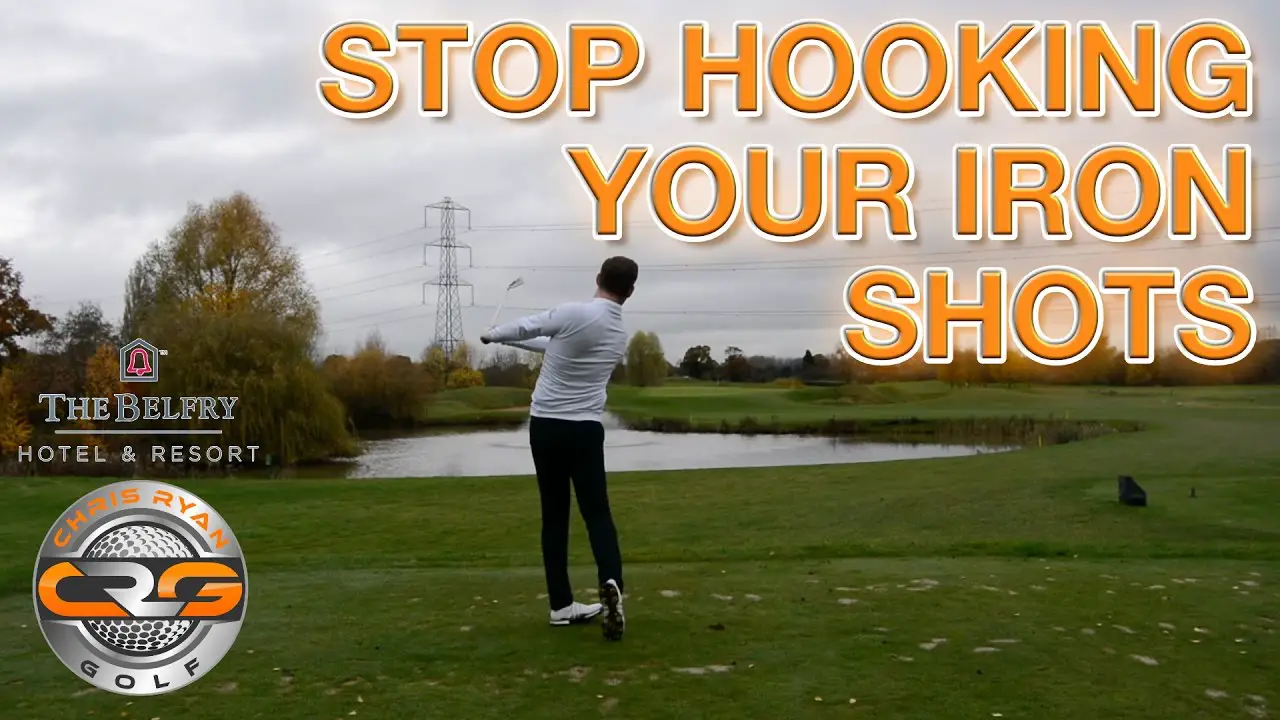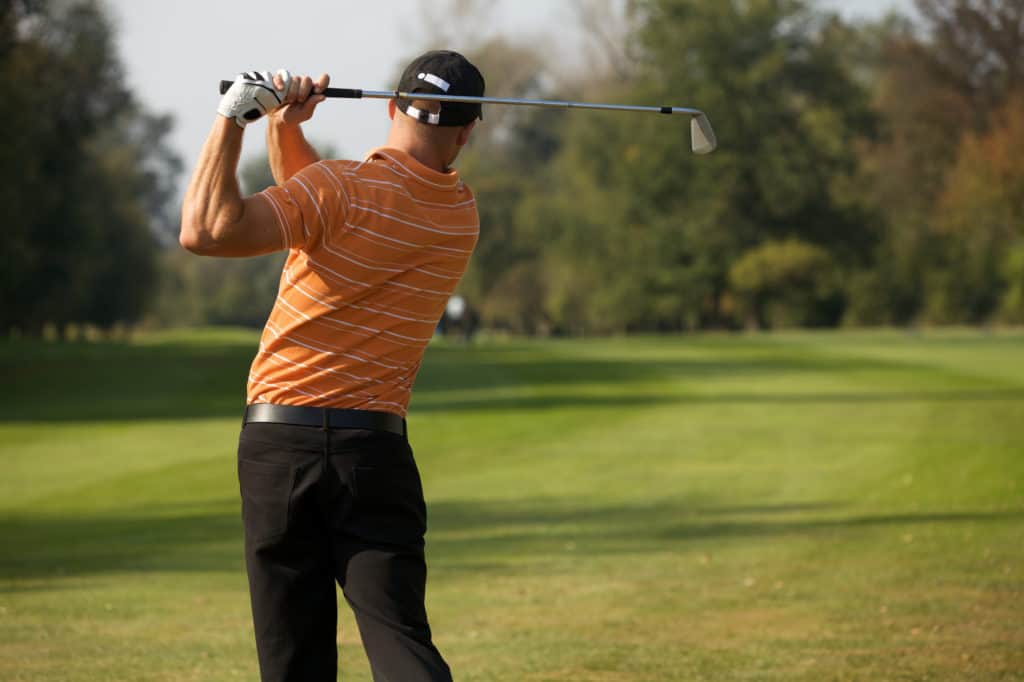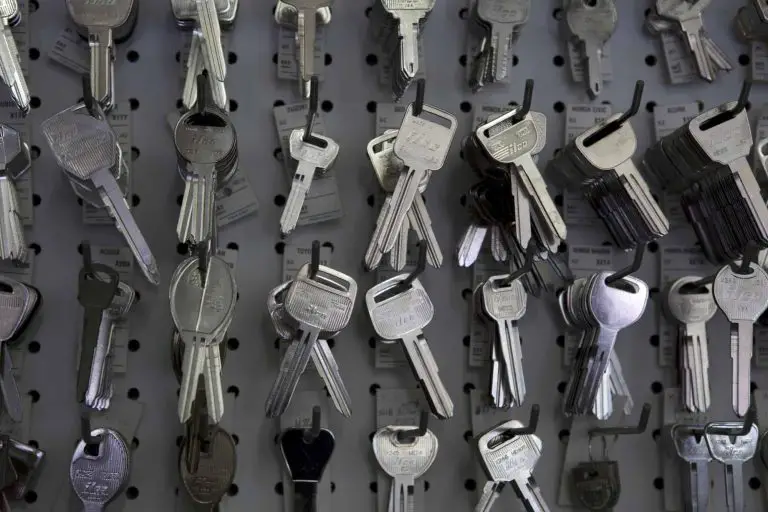Why Am I Hooking My Irons

For many golfers, experiencing hook shots with their irons can be a perplexing and frustrating issue. You step up to the ball, execute what feels like a solid swing, only to watch in dismay as the ball takes a sharp leftward curve (for right-handed golfers). If you find yourself repeatedly asking, “Why am I hooking my irons?” you’re not alone. Understanding the reasons behind this shot shape and exploring effective solutions can help you regain control over your iron play.
In this article, we will delve into the various factors that contribute to hooking your irons and provide valuable insights and tips to rectify this problem. We’ll cover key elements such as grip and hand position, swing path and clubface alignment, body alignment and weight distribution, timing and tempo, equipment considerations, common mistakes and faults, and adjustments and corrections.
By unraveling the secrets behind hook shots and addressing the underlying causes, you’ll be equipped with the knowledge and techniques needed to improve your iron shots and reduce hooks. So, let’s embark on a journey to uncover the reasons behind your hooking issue and discover practical solutions to elevate your iron play to new heights.

Understanding the Basics of Hook Shots
Before we delve into the specific causes and solutions, let’s establish a clear understanding of what a hook shot entails. A hook is a shot that starts off straight or slightly to the right (for right-handed golfers) but then curves sharply to the left during its flight. This pronounced left-to-right curve is caused by a combination of swing factors and clubface positioning at impact.
To diagnose and correct hook shots effectively, it is essential to analyze your swing mechanics, grip, hand position, swing path, clubface alignment, body alignment, timing, tempo, equipment considerations, and common mistakes that often lead to hooks. By addressing these elements, you can make the necessary adjustments and improve your ball flight consistency.
Grip and Hand Position
The grip you use and the position of your hands on the club can significantly influence the outcome of your iron shots. A strong grip, where your hands rotate clockwise (for right-handed golfers), can encourage a closed clubface at impact, resulting in hooks. The V-shaped formed by your thumb and index finger should point more towards your right shoulder (for right-handed golfers) to promote a neutral or slightly weak grip, which can help reduce hooks.
Similarly, hand position plays a crucial role in controlling the clubface. If your hands are excessively ahead of the ball at impact, the clubface tends to close, leading to hooks. Maintaining a slightly forward shaft lean and allowing your hands to release naturally through impact can help mitigate hooking tendencies.
Swing Path and Clubface Alignment
The path your club takes during the swing is a major factor in determining the direction of your shots. An inside-to-out swing path, where the clubhead approaches the ball from the inside of the target line, can promote hooks. This swing path tends to produce a closed clubface position at impact, exacerbating the leftward curve.
To combat this, focus on maintaining a more neutral swing path, allowing the club to move along the target line or slightly from the inside. This adjustment helps prevent excessive rotation of the clubface and promotes a more desirable ball flight.
Clubface alignment is another critical aspect to consider. If the clubface is closed relative to the swing path at impact, hooks are more likely to occur. Ensuring that the clubface is square or slightly open at impact can help straighten out your shots and reduce hooks.
Body Alignment and Weight Distribution
The alignment of your body in relation to the target and your weight distribution during the swing can influence the path and clubface angle, thus affecting shot shape. If your body alignment is closed (aimed left of the target for right-handed golfers), it can encourage an inside-to-out swing path and a closed clubface, resulting in hooks.
Maintaining a neutral or slightly open body alignment helps promote a more neutral swing path and square clubface. Additionally, paying attention to weight distribution throughout the swing can contribute to better shot outcomes. A balanced weight transfer between your feet can help maintain control and prevent excessive rotation of the clubface.
Timing and Tempo
The timing and tempo of your swing are crucial factors that impact the consistency of your iron shots. Poor timing can lead to compensations in your swing, causing the clubface to close and resulting in hooks.
It’s important to achieve a smooth and synchronized sequence of movements throughout your swing. Rushing the downswing or decelerating through impact can disrupt the timing and create an imbalance in the swing, leading to hooks. Maintaining a steady tempo and allowing the clubhead to naturally release through the hitting zone can help promote a more neutral clubface position and improve shot consistency.
Equipment Considerations
While swing mechanics and technique play a significant role in hooking iron shots, equipment factors should not be overlooked. The selection of the appropriate club, shaft flex, and lie angle can contribute to shot shape.
Using the wrong club or shaft with characteristics that don’t suit your swing can exacerbate hook tendencies. Seek advice from a professional club fitter to ensure your equipment is properly fitted to your swing characteristics and preferences. A club with the correct specifications can help promote a more desirable ball flight and reduce hooks.
Additionally, clubhead design can influence shot shape. Certain clubhead designs may have built-in draw biases, which can exacerbate hooks. Understanding the characteristics of your clubs and how they interact with your swing can provide insights into potential equipment-related causes of hook shots.
Common Mistakes and Faults
Golfers often make specific mistakes or develop swing faults that contribute to hooking iron shots. These errors can stem from various elements within the swing mechanics and require focused attention to correct. Here are some common mistakes and faults to be aware of:
- Overactive Release: Excessive rotation of the forearms and hands through impact can close the clubface, resulting in hooks. Focus on a smoother release and allowing the club to naturally square up at impact.
- Closed Clubface at Address: Starting with a closed clubface at address predisposes you to a closed face position at impact. Check your clubface alignment during setup to ensure it is square or slightly open.
- Swaying Hips: Excessive lateral movement of the hips during the swing can disrupt the swing path and clubface control, leading to hooks. Maintain stability in your lower body and focus on rotating the hips instead of swaying.
- Casting or Early Release: Releasing the club too early in the downswing can lead to an open face position at impact, which can cause hooks. Work on maintaining lag and delaying the release until the proper point in the swing.
- Grip Pressure: Gripping the club too tightly can restrict the natural release of the hands, contributing to hooks. Maintain a relaxed grip pressure throughout the swing for better clubface control.
Identifying and addressing these mistakes and faults through focused practice and targeted drills can help you correct your hook shots and improve the consistency of your iron play.
Adjustments and Corrections
Now that you have a deeper understanding of the various factors contributing to hook shots, let’s explore some adjustments and corrections you can implement to rectify this issue:
- Adjusting Grip and Hand Position: Experiment with grip adjustments, moving towards a neutral or slightly weaker grip. Ensure your hands are positioned comfortably on the club, allowing for a natural release.
- Fine-tuning Swing Path: Focus on maintaining a more neutral swing path by practicing drills that promote an inside-to-square swing. This adjustment can help mitigate the closed face position and reduce hooks.
- Enhancing Clubface Alignment: Develop awareness of your clubface position throughout the swing. Practice squaring the clubface at impact and maintaining a slightly open clubface alignment.
- Body Alignment and Weight Distribution: Pay attention to your body alignment, aiming slightly right of the target (for right-handed golfers) to counteract a closed swing path. Maintain balanced weight distribution for stability and control.
- Timing and Tempo: Work on achieving a smooth and consistent tempo in your swing. Focus on maintaining rhythm and allowing the clubhead to release naturally through impact.
- Seeking Professional Guidance: If you’re struggling to correct your hook shots, consider seeking professional instruction. A qualified golf instructor can provide personalized feedback, identify specific swing faults, and offer tailored drills to help you overcome the issue.
Practice and Improvement
Improving your iron play and reducing hook shots require dedicated practice and commitment. Incorporate the following tips into your practice routine to enhance your progress:
- Targeted Drills: Practice drills that focus on swing path, clubface control, and body alignment. For example, use alignment sticks or aim at specific targets to reinforce desired swing changes.
- Video Analysis: Record your swing and analyze it for swing faults, clubface position, and body alignment. Compare it to the desired technique and make necessary adjustments.
- Controlled Swing Speed: Gradually increase your swing speed while maintaining control and technique. This approach allows you to develop a more consistent and repeatable swing.
- On-Course Simulation: Replicate on-course scenarios during practice sessions to simulate real-game situations. Practice hitting different types of iron shots while maintaining your adjustments.
- Mental Focus: Develop mental routines and maintain focus throughout your swings. Clear your mind, visualize the desired shot shape, and commit to your adjustments.
Remember, improvement takes time and patience. Stay persistent with your practice routine and seek feedback from a golf professional to ensure you’re on the right track.
Seeking Professional Guidance
While self-correction can be effective, working with a golf instructor or coach can expedite your progress and provide valuable insights. A professional can analyze your swing, identify specific areas of improvement, and offer personalized guidance tailored to your needs. Their expertise and experience will provide a structured approach to overcoming hook shots and improving your overall iron play.
Conclusion
Hooking iron shots can be a frustrating issue for golfers of all skill levels. However, by understanding the underlying causes, making the necessary adjustments, and committing to focused practice, you can rectify this problem and enhance the consistency of your iron play. Remember to pay attention to your grip, hand position, swing path, clubface alignment, body alignment, timing, tempo, and equipment considerations. Implementing the corrections discussed in this article, seeking professional guidance when needed, and maintaining a positive mindset will lead you toward more accurate and satisfying iron shots on the golf course.





